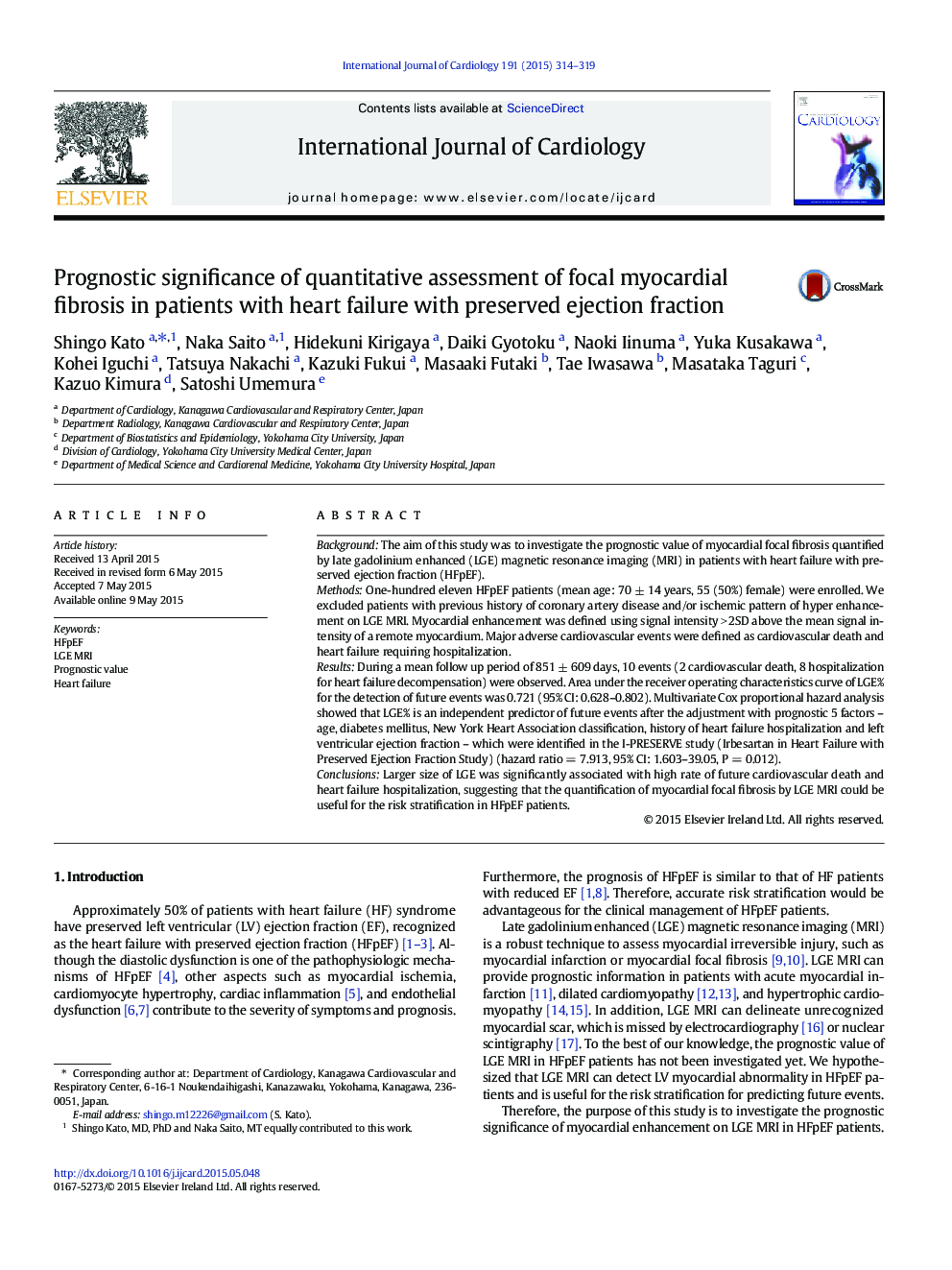| Article ID | Journal | Published Year | Pages | File Type |
|---|---|---|---|---|
| 5966842 | International Journal of Cardiology | 2015 | 6 Pages |
BackgroundThe aim of this study was to investigate the prognostic value of myocardial focal fibrosis quantified by late gadolinium enhanced (LGE) magnetic resonance imaging (MRI) in patients with heart failure with preserved ejection fraction (HFpEF).MethodsOne-hundred eleven HFpEF patients (mean age: 70 ± 14 years, 55 (50%) female) were enrolled. We excluded patients with previous history of coronary artery disease and/or ischemic pattern of hyper enhancement on LGE MRI. Myocardial enhancement was defined using signal intensity > 2SD above the mean signal intensity of a remote myocardium. Major adverse cardiovascular events were defined as cardiovascular death and heart failure requiring hospitalization.ResultsDuring a mean follow up period of 851 ± 609 days, 10 events (2 cardiovascular death, 8 hospitalization for heart failure decompensation) were observed. Area under the receiver operating characteristics curve of LGE% for the detection of future events was 0.721 (95% CI: 0.628-0.802). Multivariate Cox proportional hazard analysis showed that LGE% is an independent predictor of future events after the adjustment with prognostic 5 factors - age, diabetes mellitus, New York Heart Association classification, history of heart failure hospitalization and left ventricular ejection fraction - which were identified in the I-PRESERVE study (Irbesartan in Heart Failure with Preserved Ejection Fraction Study) (hazard ratio = 7.913, 95% CI: 1.603-39.05, P = 0.012).ConclusionsLarger size of LGE was significantly associated with high rate of future cardiovascular death and heart failure hospitalization, suggesting that the quantification of myocardial focal fibrosis by LGE MRI could be useful for the risk stratification in HFpEF patients.
